After successfully passing your practical driving test and obtaining your driving license, the next challenge is finding the perfect first car. The ideal first car should offer a blend of safety, practicality, ease of handling, and low insurance costs.
To assist you in making the best choice, we’ve gathered a selection of the top first cars for new drivers, highlighting the best options available.
The expenses associated with buying and maintaining a car can quickly add up, especially for new drivers. With that in mind, we’ve selected cars that offer excellent value for money, reliability, and fuel efficiency. Naturally, these models also come with affordable insurance options for young drivers.
Vehicles That Are The Best First Car
Although the cars featured here are all brand new, many of them are also available on the used market at reduced prices. In either case, these vehicles are reasonably priced, particularly when financed through a Personal Contract Purchase (PCP) agreement or a Personal Contract Hire (PCH) lease.
1. Skoda Fabia
The Skoda Fabia is a compact, economical car produced by the Czech automaker Skoda, known for its practicality, reliability, and value for money.
First introduced in 1999, the Fabia has become one of Skoda’s most popular models, offering a small but spacious design ideal for city driving. The car is available in various body styles, including hatchback, sedan, and estate, making it versatile enough to cater to different needs.
When it comes to choosing the best first car, several models stand out. The Skoda Fabia is often considered the best overall first car for new drivers. With a price starting from £20,300, it excels in interior space, on-board technology, and comfort.
While it doesn’t offer hybrid or electric options, its petrol engines deliver impressive fuel economy, surpassing 45mpg. The entry-level 1.0 MPI engine, which brings the Fabia into insurance group four, makes it one of the most affordable cars to insure in the UK.
Although its 79bhp engine may struggle at higher speeds, the Fabia compensates with excellent efficiency and a comfortable ride. The spacious 380-litre boot is one of the largest in its class, making it suitable for family trips.

Inside, the cabin feels well-constructed, and the standard features are generous for the price. As Ellis Hyde, a news reporter who tested the Fabia in the UK, put it, “The Fabia has fine-tuned what was already a pretty compelling package into one of the best superminis you can buy.”
Alternatives to the Skoda Fabia include the SEAT Ibiza and Volkswagen Polo, which share similar technology. The Ibiza offers a more stylish option, but the Fabia leads in practicality. The Hyundai i20 is another alternative, though it has a higher starting price than the Fabia.
No matter which model you choose, these cars offer a perfect balance of affordability, practicality, and efficiency, making them excellent choices for new drivers.
Safety features are a strong point for the Fabia, with many models equipped with standard airbags, stability control, and various driver assistance systems.
Its affordability, low running costs, and ease of maintenance have made the Fabia a popular choice for budget-conscious buyers and first-time drivers. While it may lack the excitement or flair of sportier models, the Skoda Fabia excels in being a reliable, efficient, and practical choice for everyday use.
Under the hood, the Fabia typically comes with a range of small-displacement engines, from efficient 1.0-liter 3-cylinder options to more powerful 1.2-liter and 1.6-liter engines, offering a good balance of performance and fuel efficiency. While not a performance car, the Fabia’s handling is nimble and responsive, making it well-suited for urban environments and tight spaces.
2. Kia Picanto
The Kia Picanto has evolved into a stylish and well-rounded city car, maintaining its reputation for affordability. Starting from £16,100, the Picanto remains one of the smallest new cars available, offering compact pricing to match.
The entire range sits within insurance groups three to seven, ensuring insurance premiums remain manageable. Every version of the Picanto also delivers fuel efficiency, returning over 50mpg, which makes it cost-effective for new drivers.
While none of the petrol engines are particularly powerful, the Picanto still manages to keep up with traffic during everyday driving. Its small size and light steering make it exceptionally easy to maneuver and park, even for new drivers.
Although it may not offer a thrilling drive, the Picanto is still enjoyable at lower speeds. Additionally, Kia’s renowned seven-year/100,000-mile warranty is included, adding peace of mind regarding long-term reliability.
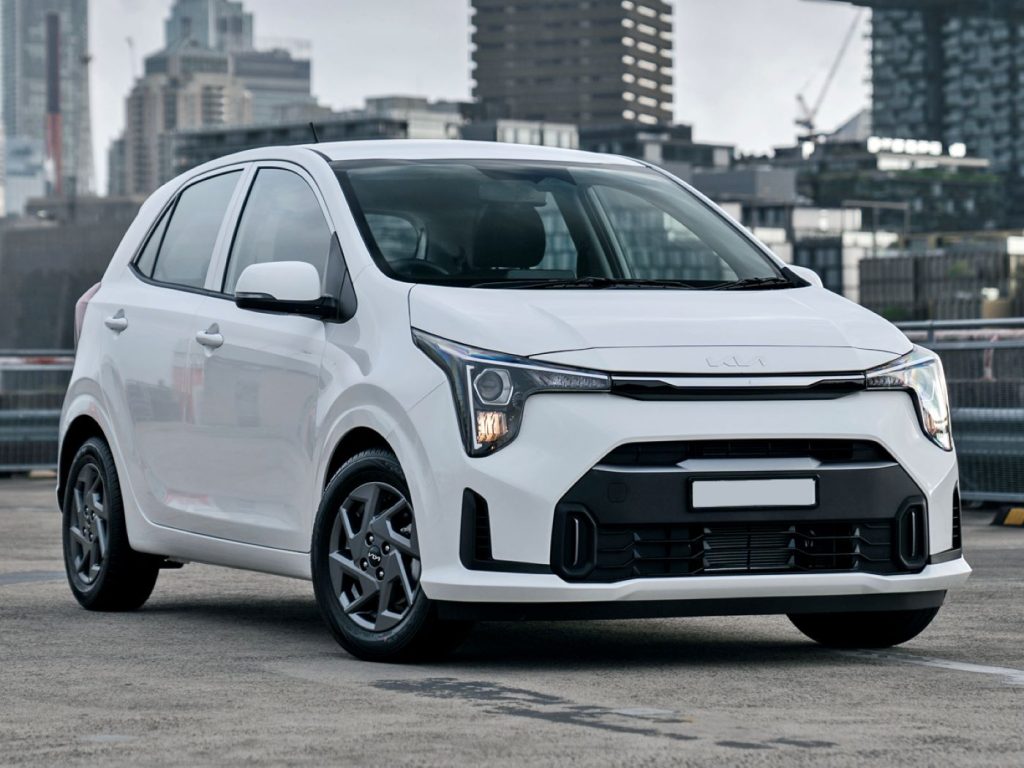
In terms of interior space, the Picanto is cleverly designed to maximize the limited area available. It comfortably seats four adults, although the firm seats may make long journeys less comfortable.
For families, the back seats include ISOFIX points for child car seats. Even the base ‘2’ model comes well-equipped, featuring an 8-inch touchscreen infotainment system, air-conditioning, all-round electric windows, and 14-inch alloy wheels.
“The latest Kia Picanto has gone through a significant glow-up, transformed from the drab and sparse first-generation car.” – Ellis Hyde, news reporter, who tested the Picanto in the UK.
In the city car market, the Hyundai i10 is the closest rival to the Picanto, though it lacks the same level of style. For those seeking an electric option, the Dacia Spring and Leapmotor T03 are affordable alternatives with zero emissions.
3. Hyundai i10
The Hyundai i10, priced from £16,400, offers a blend of big-car qualities in a compact package. Its standout feature is the availability of a group one insurance rating, which is increasingly rare.
To secure this lower rating, however, you’ll need to choose the automatic version of the i10 in Advance trim. While the automatic gearbox can be somewhat jerky, the five-speed manual is a smoother option, though it comes with a higher insurance premium.
Despite this, the i10 is a fuel-efficient choice, with both the 1.0-litre and 1.2-litre engines achieving over 50mpg, with the 1.2-litre model returning an impressive 53.1mpg during testing.
Although more understated than the Kia Picanto, the Hyundai i10 offers a more mature driving experience. It boasts one of the most comfortable rides in the city car category, making it suitable for longer journeys, such as daily commutes.
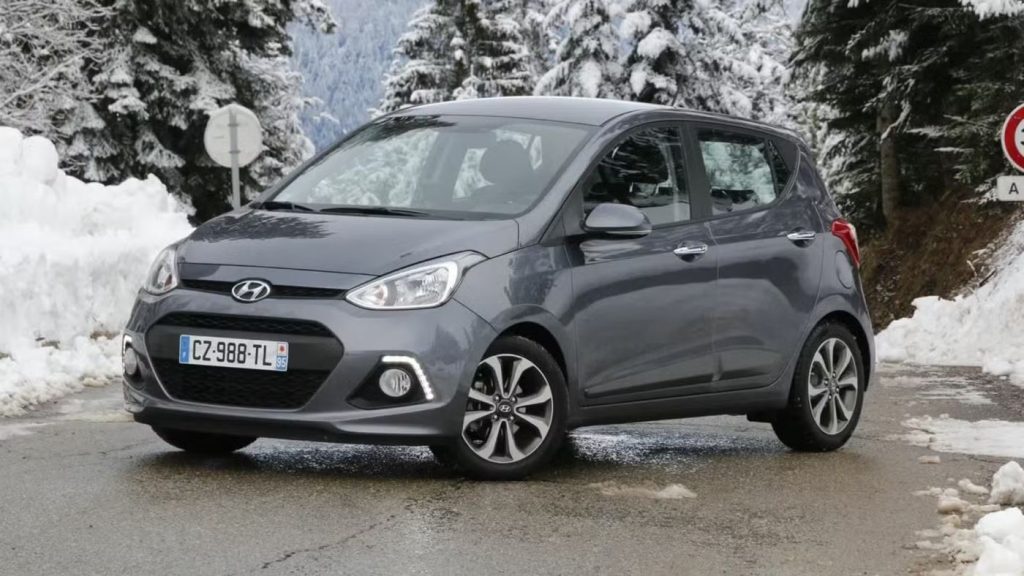
The light steering and modest power ensure that while the i10 may not be exciting to drive, it is incredibly easy to navigate and park in urban environments.
The i10 also shines in terms of equipment. Even the entry-level Advance trim includes 15-inch alloy wheels, air-conditioning, an 8-inch touchscreen with Apple CarPlay and Android Auto, rear parking sensors, a reversing camera, and cruise control.
“Hyundai’s smallest car is more comfortable and refined than ever, while the diminutive size, tight turning circle, and light steering make it an absolute doddle to drive around town.” – Ellis Hyde, news reporter, who tested the i10 in the UK.
Like the Kia Picanto, the Hyundai i10 faces competition from other small cars in the city car category. If you’re looking for more space for your budget, the Suzuki Swift, Vauxhall Corsa, or Dacia Sandero offer larger options.
4. Toyota Aygo X
The Toyota Aygo X, priced from £16,900, is a unique and stylish pseudo-SUV that offers the affordability of a city car. Although it costs more than many of its competitors, it brings an extra layer of flair with its SUV-inspired design.
The Aygo X features a characterful three-cylinder engine, which, while not as modern as the hybrid or electric alternatives becoming more common in the small car market, offers a balance of power that helps keep insurance premiums and fuel consumption manageable.
On the outside, the Aygo X is distinguished by chunky plastic cladding on the wheel arches and 17-inch alloy wheels, giving it a robust, upright stance.
Despite this, its 3.7-metre length makes it nimble enough to fit into tight parking spaces, and the standard reversing camera reduces the chances of accidental bumps.
Inside, the cabin features playful body-colored touches on the doors, and the central touchscreen supports Apple CarPlay and Android Auto. While not as refined or spacious as rivals like the Kia Picanto or Hyundai i10, the Aygo X still offers plenty to like.
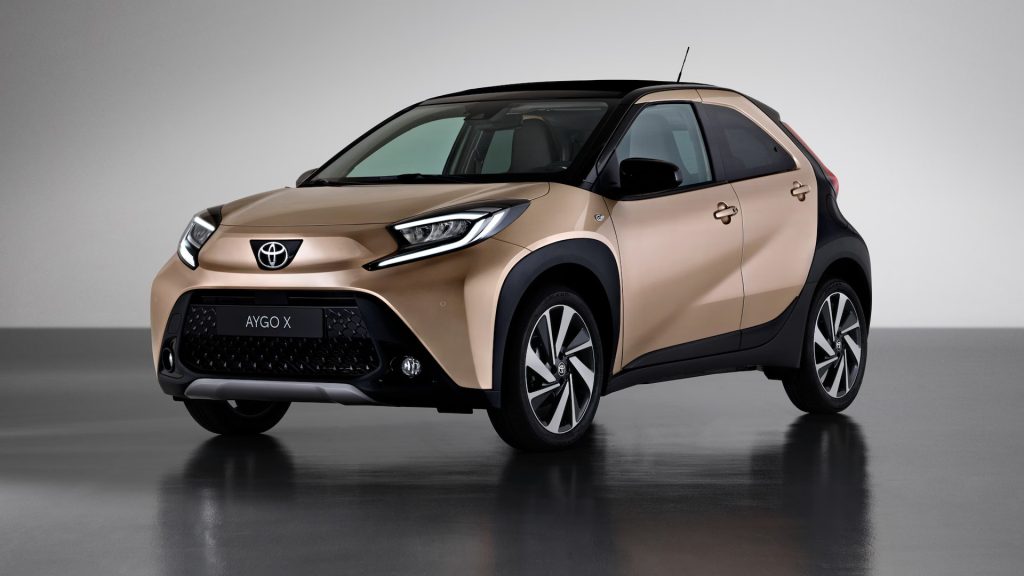
“Funky looks and a sense of fun give the tiny Toyota a certain appeal, and set it apart from the more grown-up contenders in this class.” – Ellis Hyde, news reporter, who tested the Aygo X in the UK.
The Aygo X’s distinct appearance sets it apart from other city cars. Its main competition in this niche was the Suzuki Ignis, but with production of the Ignis now discontinued, the Aygo X faces competition from more traditional city cars like the Kia Picanto and Hyundai i10. Our list of the best city cars will provide more options for consideration.
Also Read: 12 Sports Sedans That Outlast SUVs With Top Endurance
5. Volkswagen Polo
The Volkswagen Polo, starting from £21,500, is a solid choice for those seeking a ‘grown-up’ supermini.
Closely related to the Skoda Fabia, the Polo offers a sense of distinction while still being practical. If you avoid the high-performance Polo GTI, the Polo can be an affordable option in the supermini segment, with the base ‘Life’ model sitting in insurance group three.
Comfort and refinement are the Polo’s standout features, making it an ideal choice for those who value a smooth and quiet ride over sportiness. It’s recommended to skip the optional sports suspension and larger alloy wheels, as they compromise the Polo’s comfortable nature without offering any significant benefits.
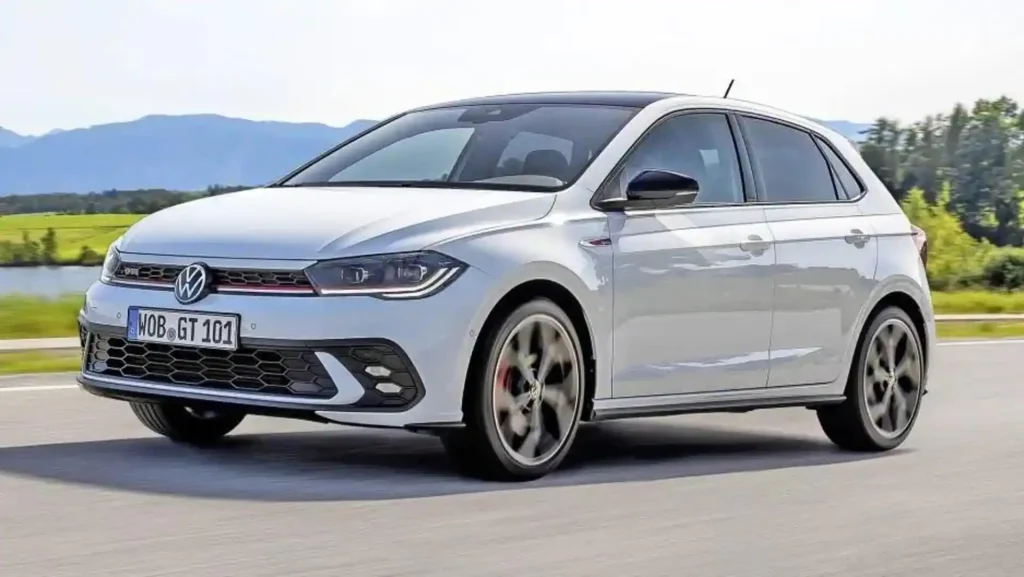
The Polo GTI, which is more expensive, is for those seeking a sportier experience, while the standard models are perfect for those who simply want a reliable, sensible, and practical car. For those looking for extra convenience, the optional Driver Assistance Package includes parking assist.
The current generation Polo is notably larger than its predecessors, providing ample space for four adults. Its 351-litre boot is slightly smaller than that of the Skoda Fabia but still roomy enough for grocery trips or occasional larger loads.
The base ‘Life’ trim is well-equipped with features such as alloy wheels, automatic headlights, a DAB radio, electronic stability control, and rain-sensing automatic wipers.
“Buy a Polo, and you’ll be getting into a small car that rides with a similar level of composure to a VW Golf, while the interior quality is impressive.” – Ellis Hyde, news reporter, who tested the Polo in the UK.
With a wide range of superminis available, there are several alternatives to the Volkswagen Polo. More affordable options include the MG3 and Suzuki Swift, both priced under £20,000. For a more extensive selection, check out our list of the best superminis to buy.
Vehicles That Are The Worst First Car
Getting your driver’s license is an exhilarating experience, and for many, the most exciting part is imagining the perfect car for that first ride. However, not all cars are suitable for beginners, especially for those with little road experience or an abundance of excitement.
On the flip side, opting for a cheap car isn’t always the smartest choice either, as it might come at the cost of safety and reliability. Here are some cars that are not ideal for new drivers.
1. Honda S2000
While the Honda S2000 may share the same brand as the more beginner-friendly Civic, the driving experience is a completely different story.
It’s a genuine sports car with sharp handling and a short wheelbase, making it difficult to handle for a new driver. There’s little room for error, so it’s best avoided by those just starting out on the road.
The Honda S2000 is a compact, rear-wheel-drive sports car produced by Honda from 1999 to 2009. It’s renowned for its high-revving engine, sharp handling, and sleek design, making it one of the best affordable sports cars of its time.
Powered by a 2.0-liter (later 2.2-liter) 4-cylinder engine, the S2000 generates about 240 horsepower, with the early models featuring the F20C engine and later models getting the F22C engine, which offers more torque.
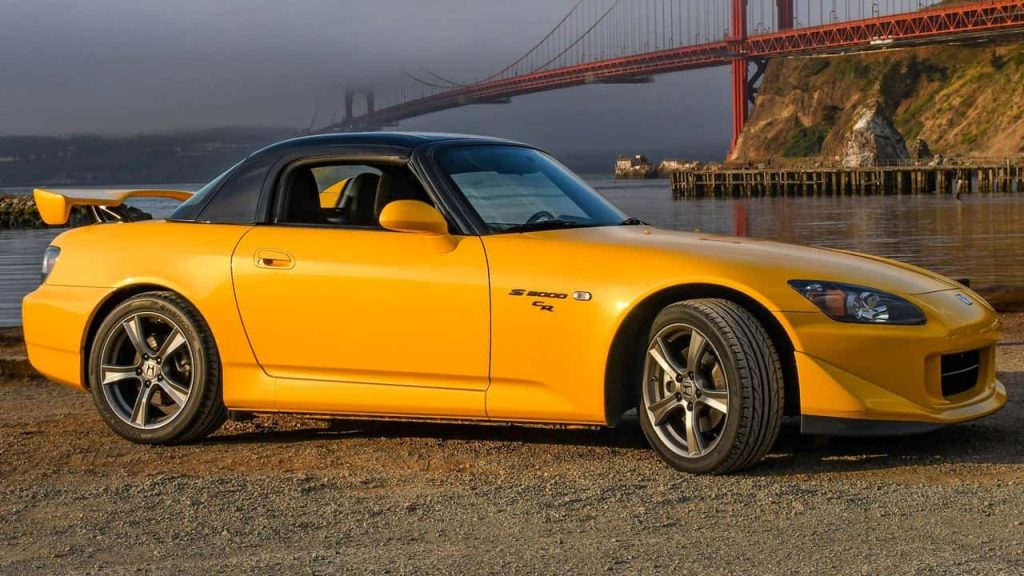
The car’s 6-speed manual transmission and high-revving nature, which can reach up to 8,800 rpm, provide a thrilling driving experience, especially on twisty roads where its sharp steering and balance shine.
The S2000’s compact size, low center of gravity, and double-wishbone suspension make it a highly agile car, loved by driving enthusiasts for its precision handling.
However, this very precision and the car’s responsive steering can be challenging for novice drivers, who might struggle with the sharpness of its handling, particularly on wet or uneven roads.
Also Read: Top 10 Electric Cars for 2025 That You Should Look Out For
2. Mazdaspeed 3
The Mazdaspeed 3 is known for its tendency to torque steer during hard acceleration, a phenomenon where the steering wheel jerks to one side. This car might be manageable for experienced drivers, but a new driver could find it challenging to control, especially under pressure.
The Mazdaspeed 3 is a high-performance version of the Mazda3, known for its sporty driving experience and powerful turbocharged engine. Produced from 2007 to 2013, it features a 2.3-liter turbocharged 4-cylinder engine that delivers around 263 horsepower and 280 lb-ft of torque, making it one of the most powerful hot hatches in its class.

The Mazdaspeed 3 is equipped with a 6-speed manual transmission, which complements its sporty nature and allows for precise gear shifts. One of its standout features is its quick acceleration and impressive handling, thanks to a front-wheel-drive layout and a well-tuned suspension that provides a good balance between comfort and performance.
However, the Mazdaspeed 3 is known for its tendency to torque steer during hard acceleration, where the steering wheel pulls to one side due to the high torque output.
3. Volkswagen Beetle
At first glance, the classic Volkswagen Beetle might seem like a great option for a beginner driver. It could teach the driver to be more defensive and repair it when something goes wrong.
However, with only 50 horsepower, it struggles to keep up with modern traffic. A new driver could find it difficult to merge onto highways or keep up with faster-moving vehicles, which could lead to dangerous situations.
The Volkswagen Beetle, originally produced from the late 1930s to the early 2000s, is an iconic car with a distinctive design and a rich history.
Known for its rounded shape and rear-engine layout, the Beetle became a symbol of the counterculture movement in the 1960s and remains one of the most recognized cars in the world. The original air-cooled Beetle was powered by a small, 1.2-liter 4-cylinder engine, which produced only about 40 to 50 horsepower—a modest amount by modern standards.

While its quirky design and easy-to-maintain mechanicals made it popular among car enthusiasts and collectors, its limited power and relatively slow acceleration make it less suitable for today’s fast-paced roads, especially highways.
Newer versions of the Beetle, introduced after the 1990s, came with updated features and more powerful engines, but the classic models still have their charm.
Despite its enduring popularity, the Beetle’s lack of highway merging power and slow acceleration can be a safety concern, particularly for new drivers who might struggle with its performance on faster-moving roads. The Beetle also offers a surprisingly small cabin and limited cargo space, making it less practical for everyday use, especially for those needing more room.
4. Lamborghini Countach
Although it’s unlikely that a first-time driver would consider the Lamborghini Countach, it’s worth noting why it would be a poor choice. It’s cramped, has heavy controls, and offers limited visibility—all problematic features for someone with minimal driving experience. The Countach is definitely not beginner-friendly.
The Lamborghini Countach is a legendary supercar that became an icon of 1970s and 1980s automotive design. Produced between 1974 and 1990, the Countach is known for its sharp, angular styling, aggressive stance, and distinctive scissor doors, which made it one of the most recognizable cars in the world.
Under the hood, the Countach was equipped with a mid-mounted V12 engine, with power ranging from 350 to 455 horsepower, depending on the model and year. This powerful engine enabled the Countach to achieve impressive acceleration and top speeds, making it a true performance machine.
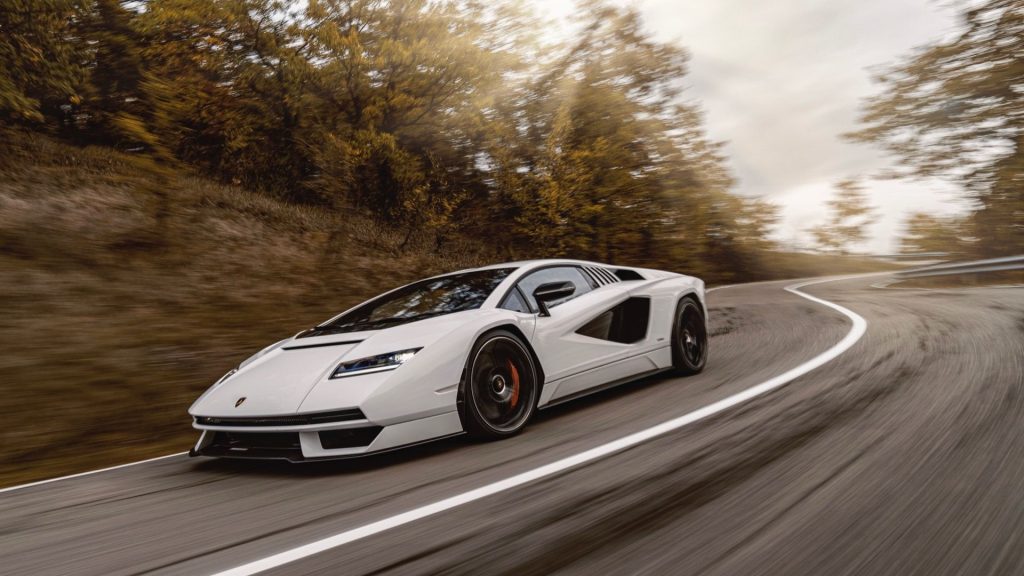
However, despite its high performance, the Countach is far from a beginner-friendly car. The cabin is extremely cramped, with limited visibility due to the low driving position and wide rear pillars, which can make driving it difficult for anyone without considerable experience.
The car’s controls are heavy, and its ride is stiff, making it uncomfortable for daily use or for someone still learning the ropes of handling a high-performance vehicle.
The Countach’s difficult handling and low ground clearance can also pose challenges, especially in tight corners or on uneven surfaces.
5. Chevrolet Camaro ZL1 1LE
The Chevrolet Camaro ZL1 1LE is a high-performance version of the iconic Chevrolet Camaro, designed for track enthusiasts and drivers seeking the ultimate in muscle car performance.
Introduced as a more extreme variant of the already powerful ZL1, the ZL1 1LE is equipped with a 6.2-liter supercharged V8 engine, which produces 650 horsepower and 650 lb-ft of torque.
This incredible power is sent to the rear wheels via a 6-speed manual transmission (or an optional 10-speed automatic), making the ZL1 1LE an absolute beast on the road and on the track.
What sets the ZL1 1LE apart from other Camaros is its track-focused suspension. The car features a specially tuned suspension system, lightweight components, and upgraded aerodynamic features, including a larger front splitter, rear wing, and dive planes, all designed to enhance downforce and handling at high speeds.
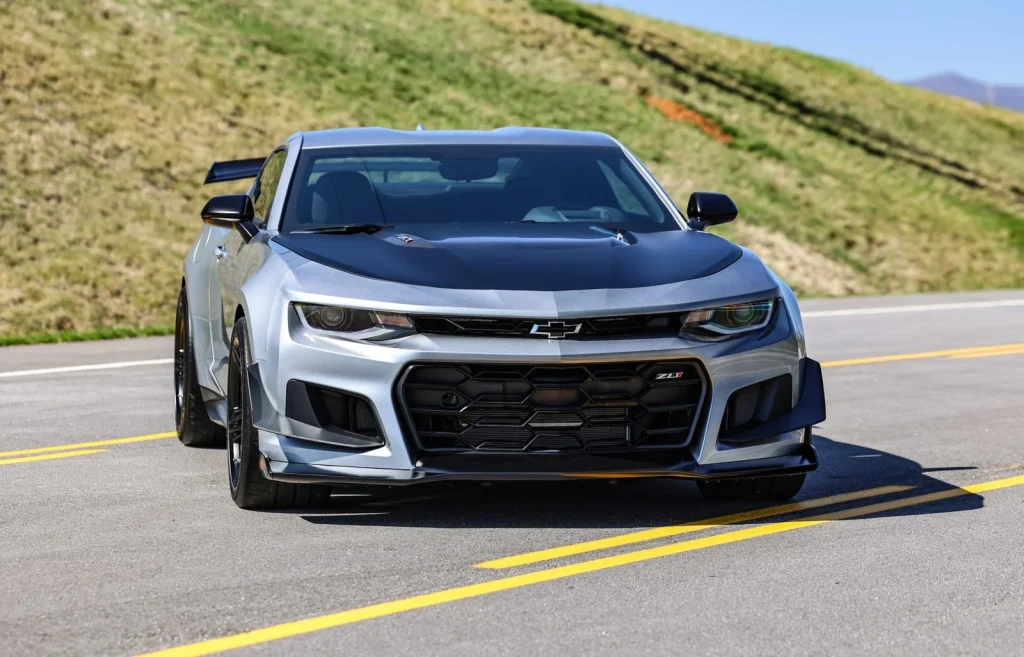
The carbon fiber materials used in the ZL1 1LE make it lighter than the standard ZL1, contributing to its improved handling and overall performance. The car also comes with super-sticky tires that offer exceptional grip, further boosting its cornering abilities.
Despite its impressive performance, the Camaro ZL1 1LE is far from beginner-friendly. The immense power and aggressive handling make it challenging for inexperienced drivers, especially in wet or slippery conditions.
The car’s limited visibility, due to its bulky front and rear design, also makes it harder to maneuver in tight spaces or during low-speed driving. Additionally, the ZL1 1LE’s stiff suspension and raw ride quality might not be the most comfortable for daily driving or for those who are still building their driving skills.
With its track-ready nature, the ZL1 1LE is better suited for experienced drivers who can fully appreciate its capabilities and handle its demanding performance characteristics. For new drivers, it’s a car that requires a level of skill and control that many may not yet possess.
